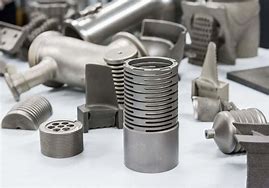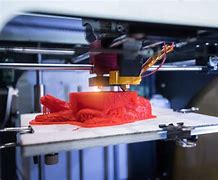**Title: Unlocking the Magic of 3D Printing with Heat-Sensitive Materials**
(How To 3d Print Temperature Responsive Materials)
Imagine printing an object that changes shape when you blow hot air on it or glows under a warm lamp. This isn’t science fiction—it’s what happens when you 3D print with temperature-responsive materials. These smart materials react to heat, bending, twisting, or even changing color. Let’s break down how to work with them and turn your 3D printer into a tool for creating “living” objects.
First, understand what temperature-responsive materials are. Most are special plastics or polymers designed to shift their behavior when heated or cooled. Shape-memory polymers, for example, snap back to a pre-set form when warmed. Thermochromic materials change color like mood rings. The key is picking the right material for your project. Check the manufacturer’s specs to see what temperature triggers the reaction.
Next, tweak your printer settings. Temperature-sensitive materials often need precise control. Set your printer’s hotend to the exact melting point of your filament. Too hot, and the material might react too early. Too cold, and it won’t stick to the build plate. Use a heated bed if possible—it keeps the first layers stable. Print slowly. These materials can be finicky, and rushing might cause warping or clogging.
Designing the model is where creativity kicks in. Think about how heat will interact with your object. A flat sheet printed with shape-memory polymer could fold into a box when dipped in warm water. A thermochromic flower might bloom under a heat lamp. Use hinges, thin joints, or layered patterns to guide the movement. Test small prototypes first. Not all designs work perfectly on the first try.
Post-processing matters too. Some materials need a “training” phase. For shape-memory objects, heat them, reshape them, then cool them to set a new default form. Thermochromic prints might need a clear coat to protect the color-changing layer. Always handle finished prints carefully—repeated heating and cooling can stress the material over time.
Now, the fun part: applications. Temperature-responsive materials aren’t just for toys. Doctors use them for smart bandages that tighten around wounds when body heat rises. Architects experiment with bricks that curl up to shade buildings in summer. Artists create sculptures that transform under spotlights. Even chefs 3D print desserts that change texture as they cool. The possibilities grow as new materials hit the market.
Challenges exist, of course. These filaments cost more than standard PLA. Storage is tricky—some degrade if exposed to moisture or sunlight. Print failures are common early on. But with patience, the results are worth it. Start small. Print a simple heat-activated switch or a color-changing keychain. Learn how your printer and material behave together.
The future of 3D printing is dynamic. Temperature-responsive materials blur the line between static objects and machines. They let us build things that adapt, respond, and interact with their environment. No need for motors or batteries—just clever chemistry and a well-tuned printer.
(How To 3d Print Temperature Responsive Materials)
One last tip: share your experiments. Join forums or social groups where makers swap ideas. Someone might figure out how to combine your heat-sensitive hinge with their light-up circuit. Collaboration pushes this tech forward faster. Grab a spool, fire up your printer, and start exploring. The next breakthrough could come from your workbench.
Inquiry us
if you want to want to know more, please feel free to contact us. (nanotrun@yahoo.com)

